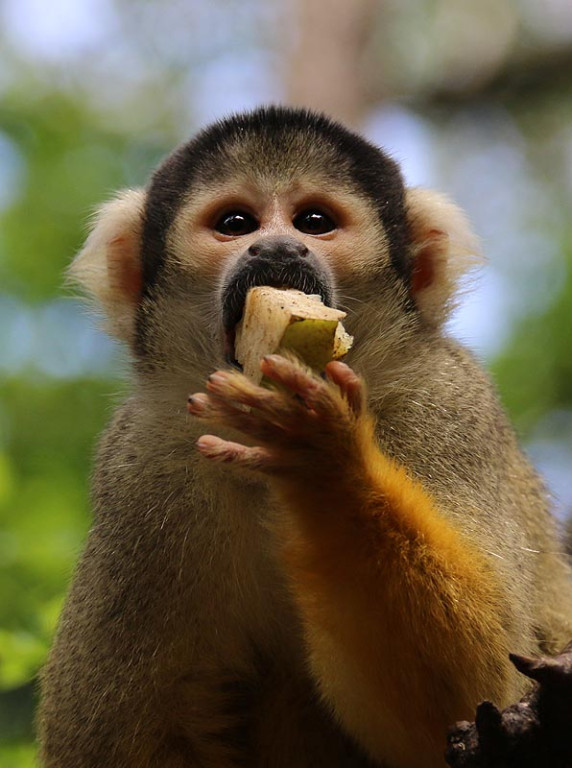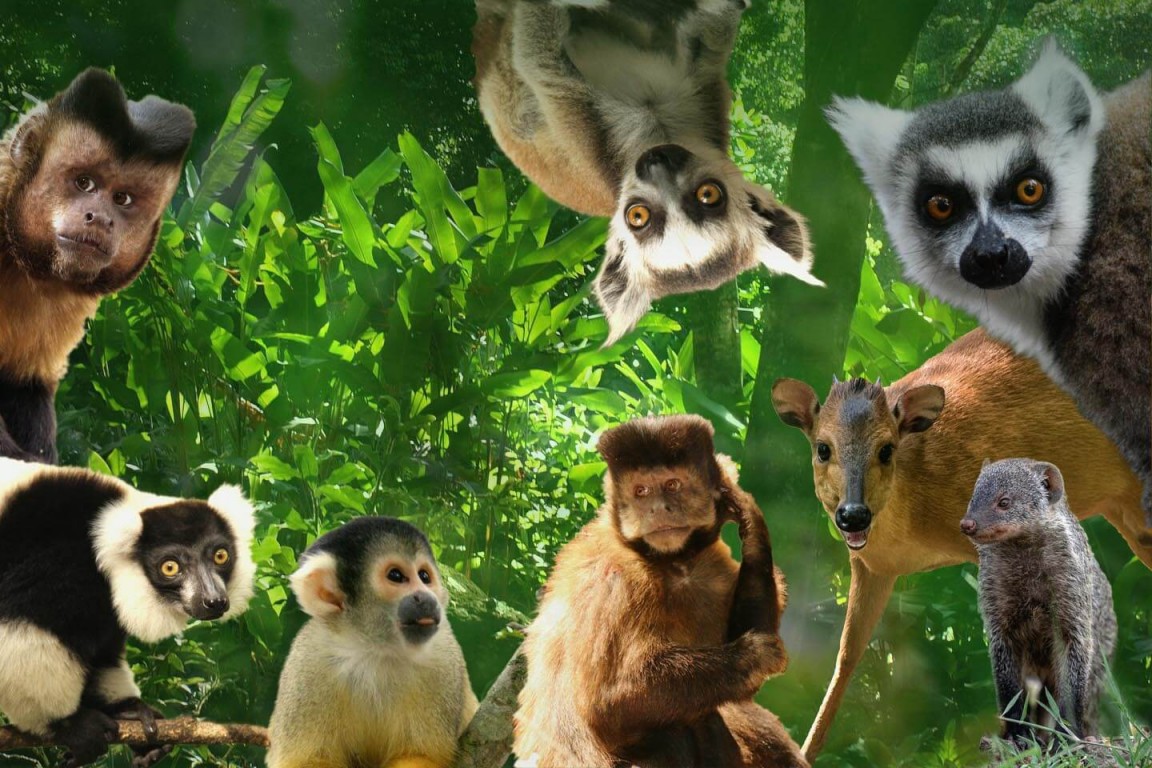Primates have a thumb and four fingers. This gives them the ability to grip with their hands and with their feet. They have a long flexible spine and a short flexible neck, which is linked to the chest by a collarbone or clavicle. This clavicle allows primates to hang from their arms without straining the shoulder muscles. Primates have larger brains than other animals, which means they can make maximum use of their environment and create more complex social structures.
They have “stereoscopic vision”, which means that because the eyes are forward-facing, the image seen through one eye overlaps the image seen through the other. This then gives a clear three dimensional image and so allows the primates to be a good judge of distance, essential for life in the trees.
Primates are split into two main groups: the “higher primates” and the “lower primates”. The “higher primates” consist of humans, apes, lesser apes, and monkeys. This group is considered to be more intelligent than the others because they have larger more complex brains. The “lower primates” or “prosimians” include lemurs, lorises, pottos, bushbabies and tarsiers. This group is considered to be less intelligent because of their smaller brains. As a result, most “lower primates” have different physical characteristics.
Higher Primates or Anthropoids Great Apes
Homo sapien
Humans are different from other primates because they walk upright, lack a body full of fur and do not have an opposable big toe. In relation to the size of their body, humans have the biggest and most complex brain. Humans can be found throughout the world.
The higher primates also include chimpanzees (Pan troglodytes), bonobos or pygmy chimpanzees (Pan paniscus), gorillas (Gorilla spp. – 3 species) and orangutans (Pongo spp. – 2 species). These four great apes differ from other primates because they have larger bodies and are sexually dimorphic (males are larger than the females). They are considered to be more intelligent than all other primates except for the human. They are more terrestrial and build nests for sleeping and birthing and so lack the ischial callosities (bum pads). Great Apes and lesser apes both lack the tail. Apes are found only in Asia or
Lesser Apes Gibbons and Siamangs hylobatidae Lesser apes also lack the tail and have a very upright body posture and a broader chest. Like great apes, lesser apes tend to hang from branches instead of balancing on top of them. The larger brains of apes result in longer gestation and maturation periods. Males and females of the same species are more or less the same size. Lesser apes are found only in
Monkeys
All primates that fall into the category of monkey will posses a tail, which is not to say that all tailed primates are monkeys. Monkeys are then further divided up into two separate groups depending on a number of different physical characteristics. These changes in physical characteristics have to do largely with their habitat. Monkeys can be found in South America, Africa and
Prosimians
Prosimians (“before apes”) are considered to be the most “primitive” of the primates.
They are the least advanced, both mentally and physically. Prosimians have physical characteristics that resemble or are the same as other mammals.
For example: Prosimians have nocturnal vision (except tarsiers). The tapetum lucidum, a reflective layer in the retina enhances night vision. This reflective layer occurs in cats and is what gives the “glow in the dark” appearance to the eyes when a light is pointed at the face.
|
New World “Platyrrhines” |
Old World “Catarrhines” |
|
Are found only in South America. |
Are found in Asia and Africa. |
|
Tree dwellers that do not often travel. |
Live in a more varied habitat or feed on the ground. |
|
The thumb sits in line with the other fingers and creates more of a scissor-like grip. |
More opposable thumb that rotates like ours. |
|
Sit on their tails so lack the ischial callosities. (bum pads). |
Sit directly on the buttocks and so have ischial callosities which are pads on the bum. |
|
Prehensile tails that can be used as a hand. |
Long straight tails used just for balance. |
|
Males and females are the same size. |
Males are larger than females. |
|
Platyrrhines = flat nose, nostrils far apart and open to the side. |
Catarrhines = down facing nose, nostrils open downwards. |
|
Two extra molars compared to Old World primates. |
Same number of teeth as us with specialized premolars for sharpening the upper canine. |
|
Lack cheek pouches. |
Have cheek pouches for storing food. |








